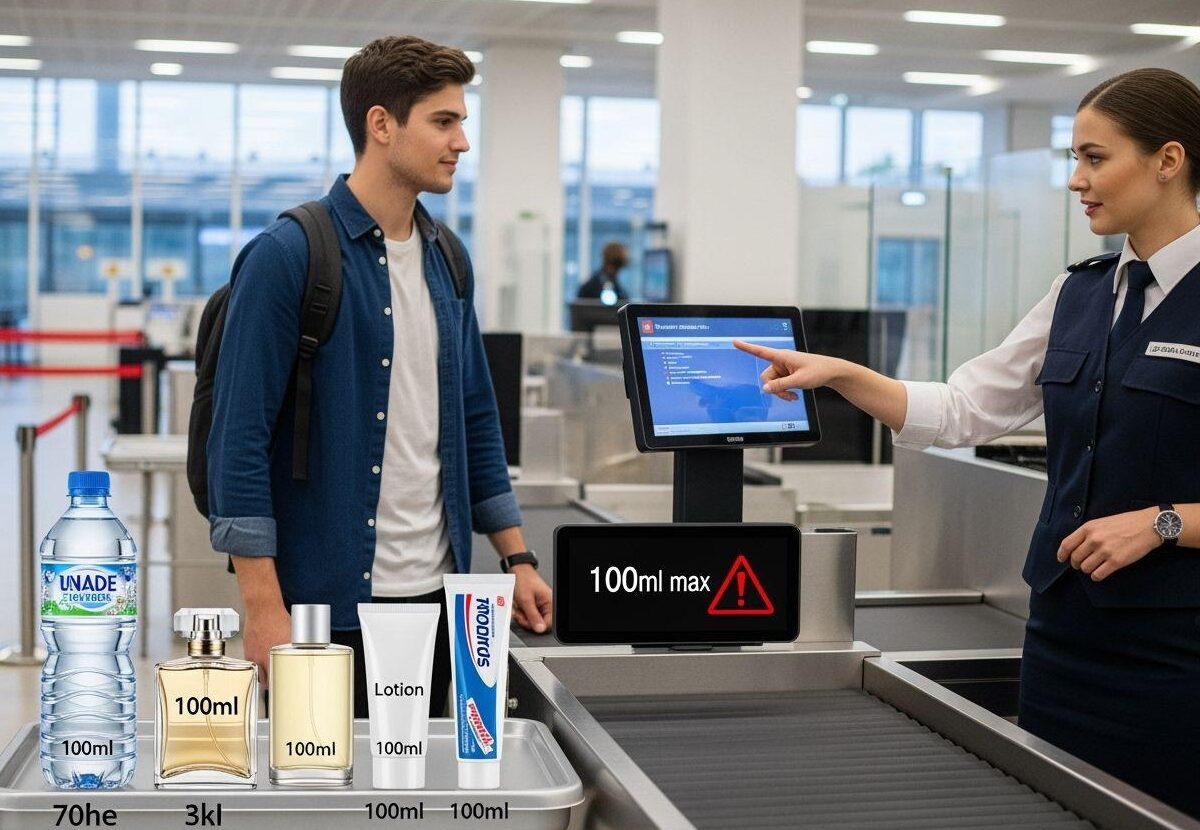Airports across the European Union are preparing to abolish the long-standing 100ml liquid restriction for hand baggage, signaling a significant transformation in airport security and travel protocols. This development comes as part of the introduction of advanced liquid screening technology capable of safely detecting liquid explosives in larger containers, thus allowing passengers to carry liquids, aerosols, and gels (LAGs) in containers up to 2 liters onboard. This change promises to enhance passenger convenience, improve operational efficiency at airports, and maintain stringent security standards.
For nearly two decades, the 100ml liquid rule has been a hallmark of EU airport security, restricting liquids in hand luggage to containers no larger than 100 milliliters. The justification for this rule has traditionally been the limited capability of conventional X-ray machines and screening systems to detect explosive liquids effectively. However, technological advancements have led to the development of new explosive detection systems that can accurately scan the contents of much larger liquid containers. These systems, such as the Smiths Detection Hi-Scan 6040 CTiX scanners already installed in airports like Rome, Milan, Bergamo, Catania, Bologna, and Turin in Italy, promise to allow passengers to bring liquid containers far exceeding the previous limit without compromising security.
The European Civil Aviation Conference (ECAC) approved a screening solution in June 2025 after rigorous testing demonstrated its high detection accuracy. The European Commission has been working closely with ECAC to ensure that equipment manufacturers submit their new scanners for certification. Once approved and stamped for EU compliance, these advanced screening devices can be deployed across EU airports. The European Commission indicated that this deployment could happen imminently, marking the official phasing out of the 100ml liquid restriction for airports equipped with the new technology.
Airports Council International (ACI) Europe, representing airport operators, has welcomed this shift, emphasizing its positive impact on both passenger experience and airport operations. By allowing carriers to bring up to 2 liters of liquids in their hand baggage, travelers can avoid the hassle of repacking or discarding larger bottles and gels before flights. From the operational perspective, the new security screening technology streamlines passenger flow through checkpoints, as it delivers enhanced automated detection capabilities, reducing the need for manual secondary checks and enabling security staff to concentrate on other critical tasks.
Despite this progress, the rollout will not be uniform across all EU airports immediately. The new detection systems are generally more expensive and not yet installed everywhere. Some German, Irish, Lithuanian, Maltese, Swedish, and Dutch airports are in the process of equipping themselves with this technology, while others are still dependent on the older equipment that necessitates adherence to the 100ml limit. Furthermore, ACI Europe has criticized the EU’s slow certification process for security equipment, calling for urgent reform. The current approval system is considered outdated and inefficient, significantly delaying the introduction of innovative security technologies at an EU-wide scale. ACI Europe has advocated for a centralized, faster certification regime aligned with standards in the UK and US to accelerate adoption and improve overall security.
This anticipated change aligns with broader objectives to modernize airport security while balancing traveler convenience and safety. The adjusted rules will also facilitate smoother transit procedures and potentially reduce queues at security checkpoints due to faster screening. Importantly, the continued accuracy and reliability of the scans will ensure that safety is not compromised during these procedural updates.
In conclusion, the scrapping of the 100ml liquid restriction at EU airports equipped with advanced screening technology represents a landmark shift in travel and security protocols. It reflects both technological progress and a commitment to improving the passenger experience without lowering security standards. While full implementation will take time—dependent on equipment rollout and certification—the change is poised to revolutionize air travel in Europe in the near future.
If travelers plan to fly soon, it is advisable to check the specific regulations and capabilities at their departure airports since the 100ml rule remains in place where the new scanners are not yet operational. This phased implementation means that while many travelers will soon benefit from the relaxed rules, others may still encounter the traditional liquid restrictions during their journeys.

